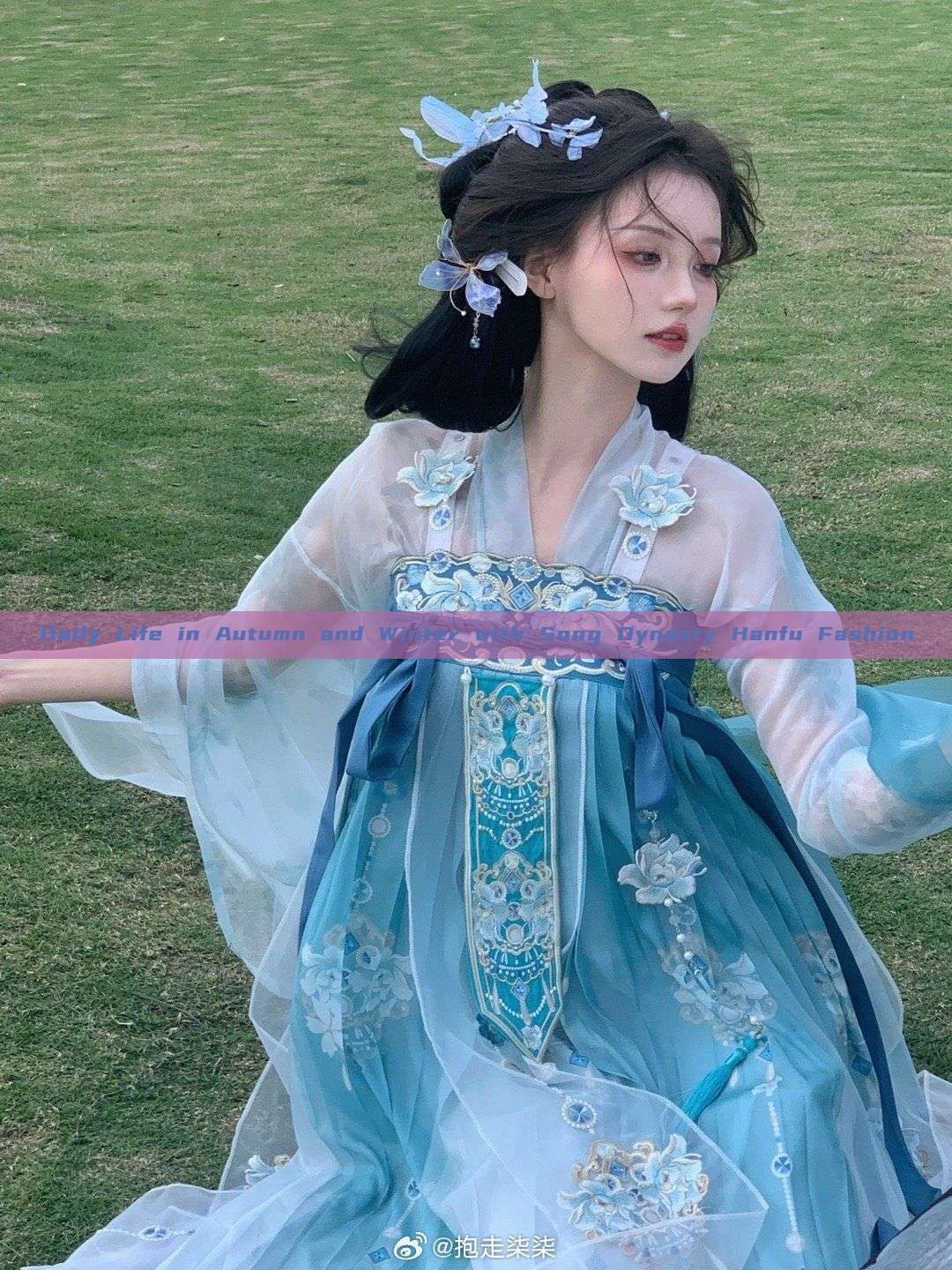Daily Life in Autumn and Winter with Song Dynasty Hanfu Fashion
In the autumn and winter seasons, the traditional Hanfu attire of the Song Dynasty takes center stage in Chinese culture, embodying warmth, elegance, and everyday functionality. This article delves into the beauty and practicality of Song-style Hanfu in daily life.

The Song Dynasty (960-1279 AD), a pivotal period in Chinese history, witnessed a refined evolution in clothing culture. The Hanfu, a traditional Chinese clothing style, underwent significant changes during this era, influenced by societal norms, aesthetics, and practical considerations. As the weather cooled down, layers of warmth became integral to everyday attire, yet maintaining an elegant and dignified appearance.
Autumn is a transition season where layers of clothing are essential to adapt to the changing weather conditions. Song-style Hanfu often featured layers of silk and cotton fabrics, with intricate patterns and designs. Men's Hanfu would typically consist of a long robe called a "changshan," worn over a layered shirt or undergarment. The design was simple yet elegant, often featuring broad sleeves and a graceful train at the back. Women's Hanfu during this period was equally captivating, with intricate designs and layers of skirts and robes that flowed gracefully with every movement.
As the winter months progressed, the need for warmth became paramount. Song-style Hanfu offered solutions to this challenge. The use of thicker fabrics like silk brocade and wool became common, often combined with undergarments made of silk or cotton padded with fur or other warm materials. The design details such as intricate embroidery, patterns, and accessories like fur-trimmed hoods and warm scarves added to the elegance of these outfits.
The beauty of Song-style Hanfu lies in its simplicity and balance of aesthetics with practicality. The design elements such as broad sleeves, graceful trains, and intricate patterns not only looked beautiful but also served a purpose. The layered design offered flexibility to adjust according to the weather conditions, ensuring comfort and warmth. The use of natural fabrics like silk and cotton was not only comfortable but also sustainable and environmentally friendly.
In addition to its beauty and functionality, Song-style Hanfu also reflected societal norms and values. The design elements such as color combinations, patterns, and accessories often carried symbolism and cultural significance. For instance, specific colors were associated with certain occasions or social status, reflecting the traditional values of respect and hierarchy in Chinese society.
In modern times, the revival of traditional Hanfu has become a trend among cultural enthusiasts and history lovers. The beauty and elegance of Song-style Hanfu have attracted a new generation of followers who appreciate its intricate design and cultural significance. As we embrace this traditional attire in our daily lives, we also uphold the values of respect, balance, and harmony that are inherent in Hanfu culture.
In conclusion, the beauty of Song-style Hanfu lies in its balance of aesthetics and practicality, reflecting both traditional values and modern sensibilities. As we embrace this traditional attire during autumn and winter, we not only appreciate its beauty but also uphold the rich cultural heritage of China's clothing history.
In daily life, wearing Song-style Hanfu is not just about fashion but also about embracing a culture that emphasizes respect for tradition, balance in everyday life, and harmony with nature and society. As we wear these beautiful outfits, we also carry forward the rich cultural heritage of China's clothing history into modern times.

 Previous Post
Previous Post



